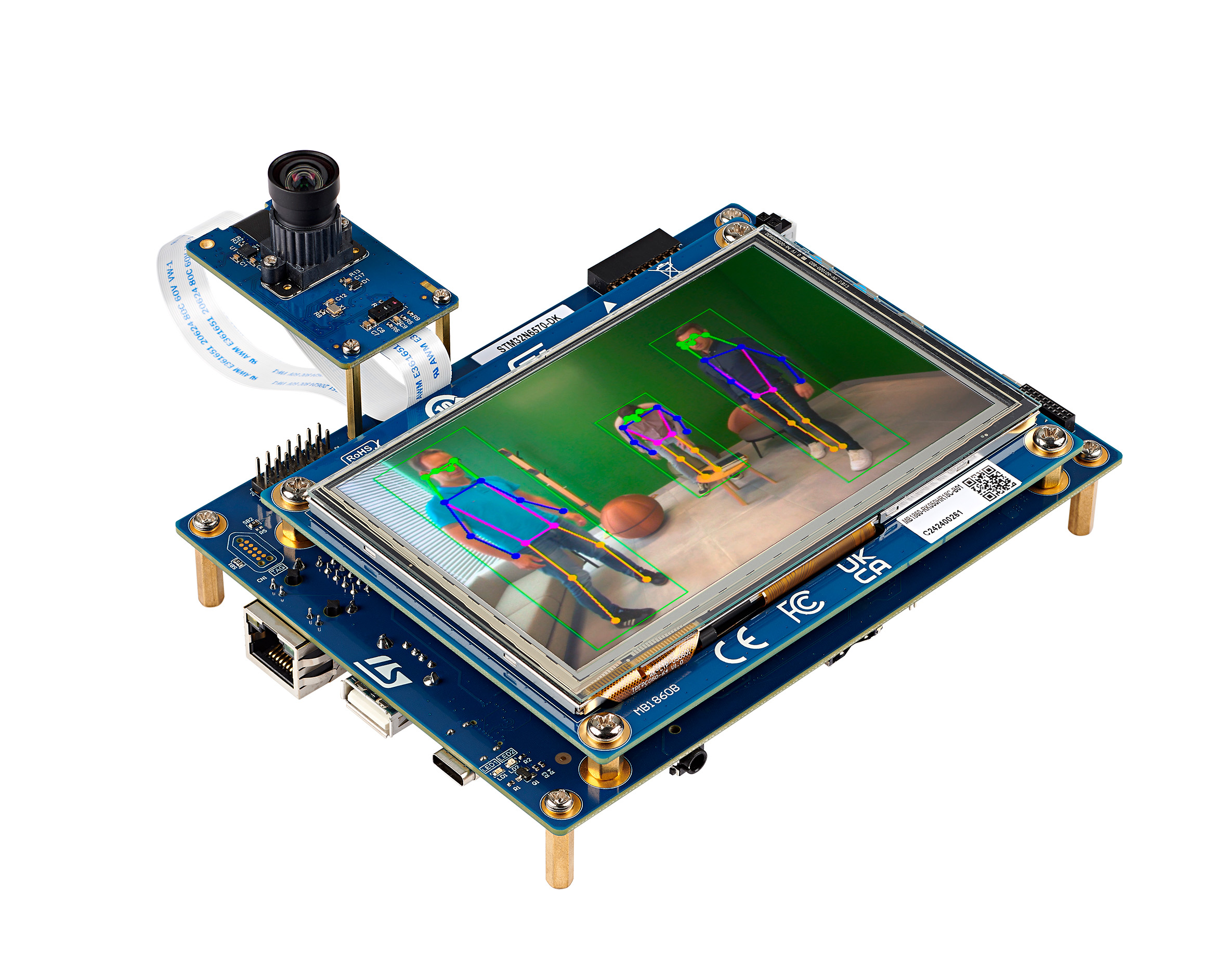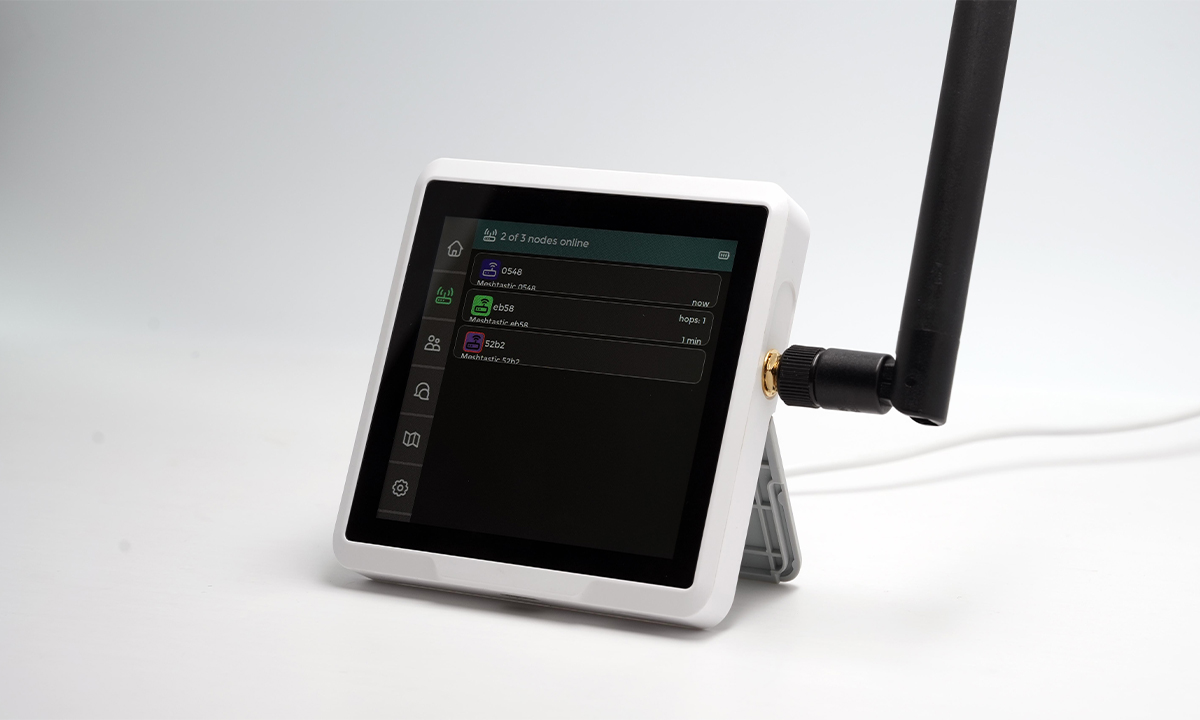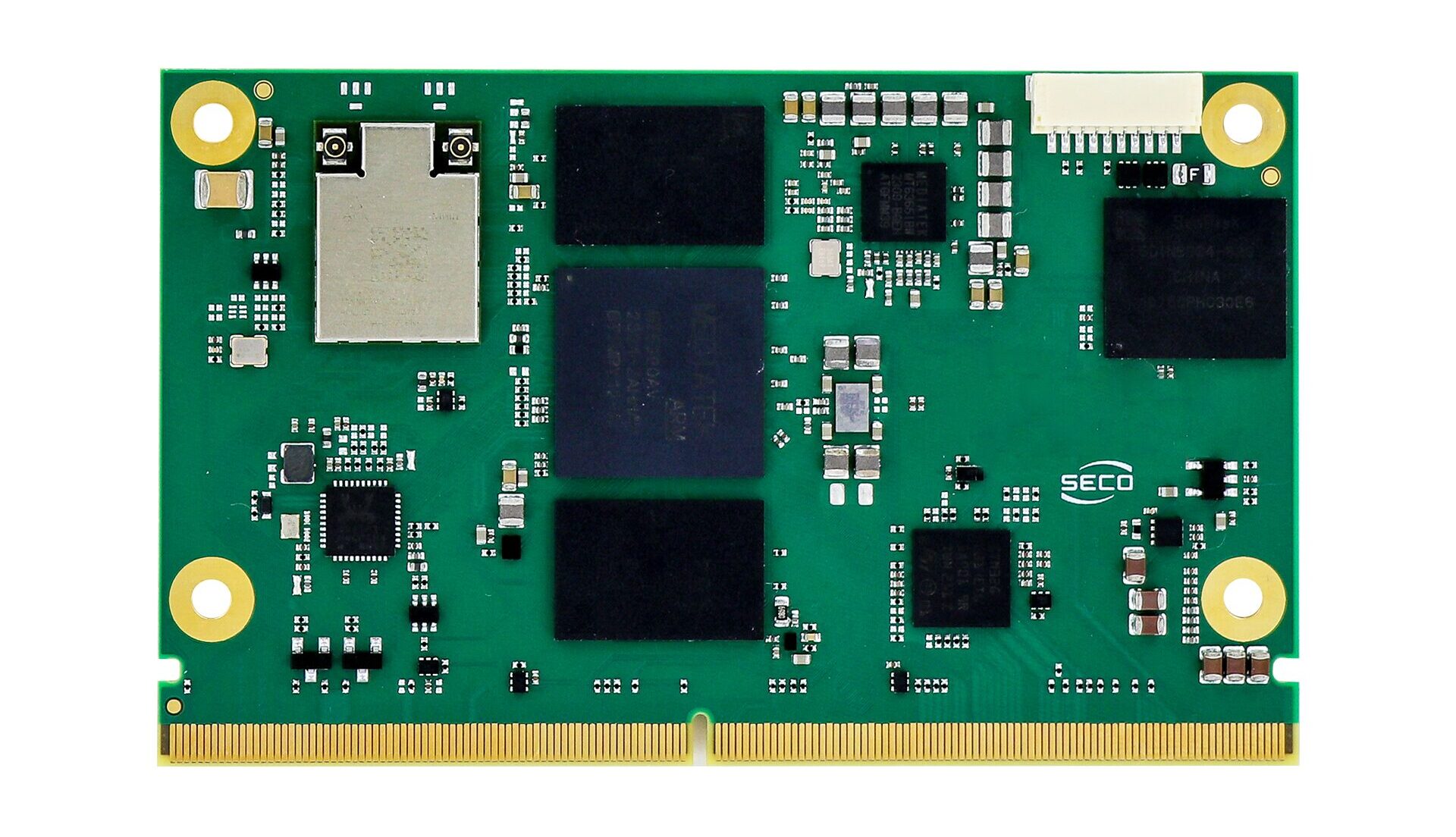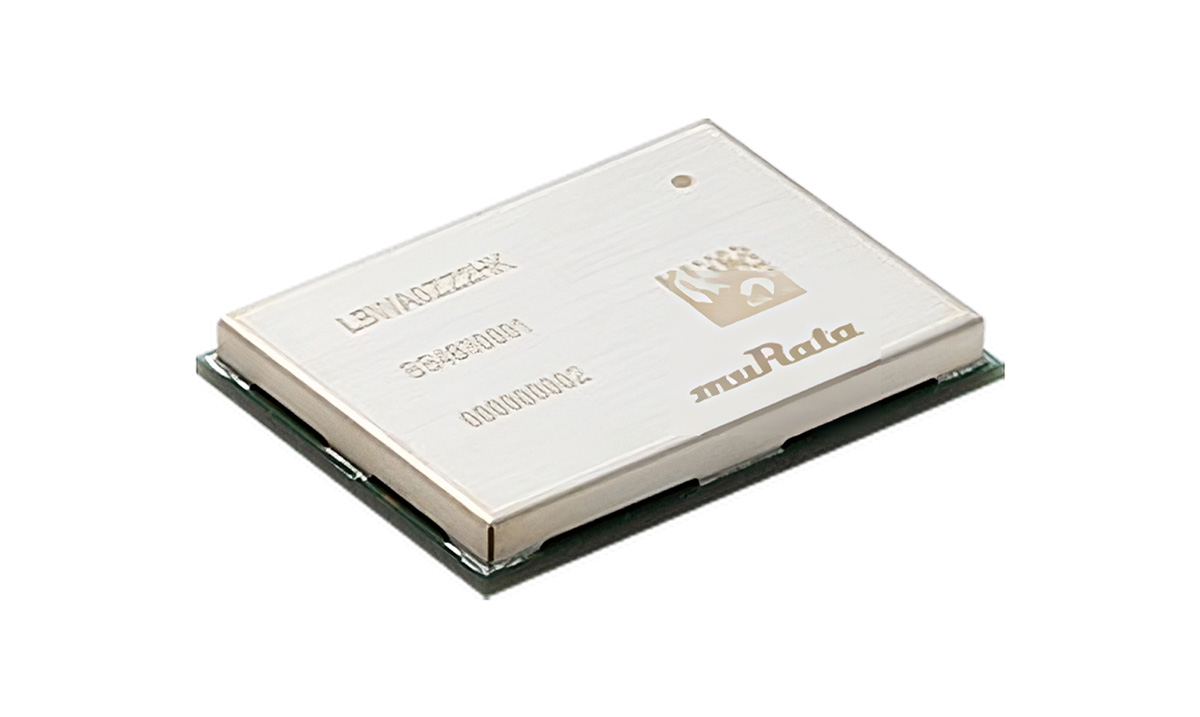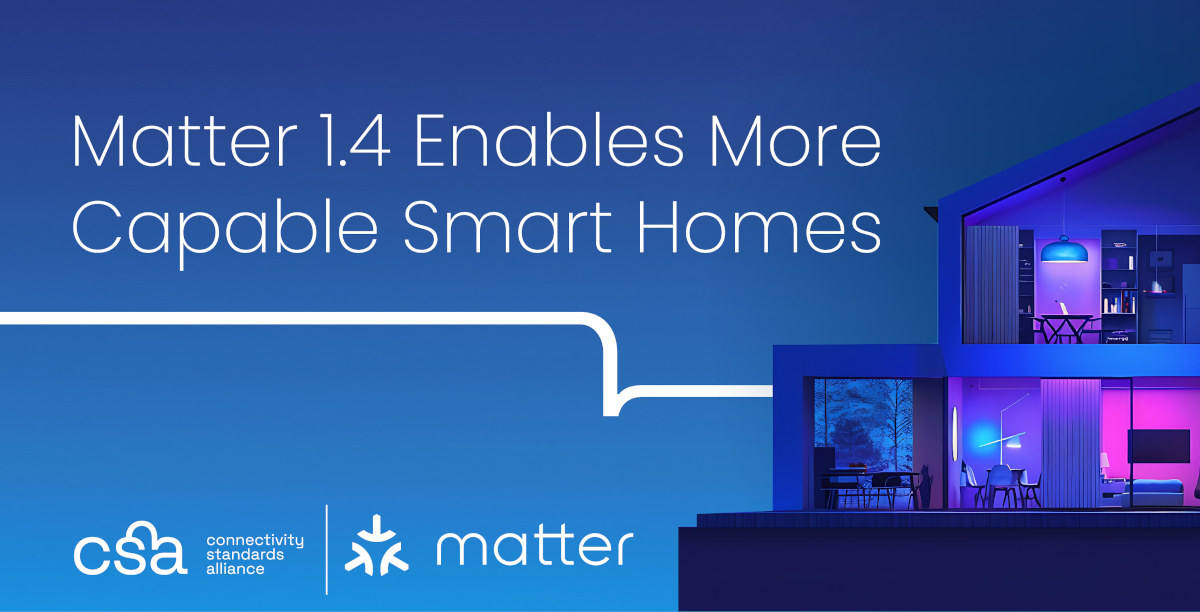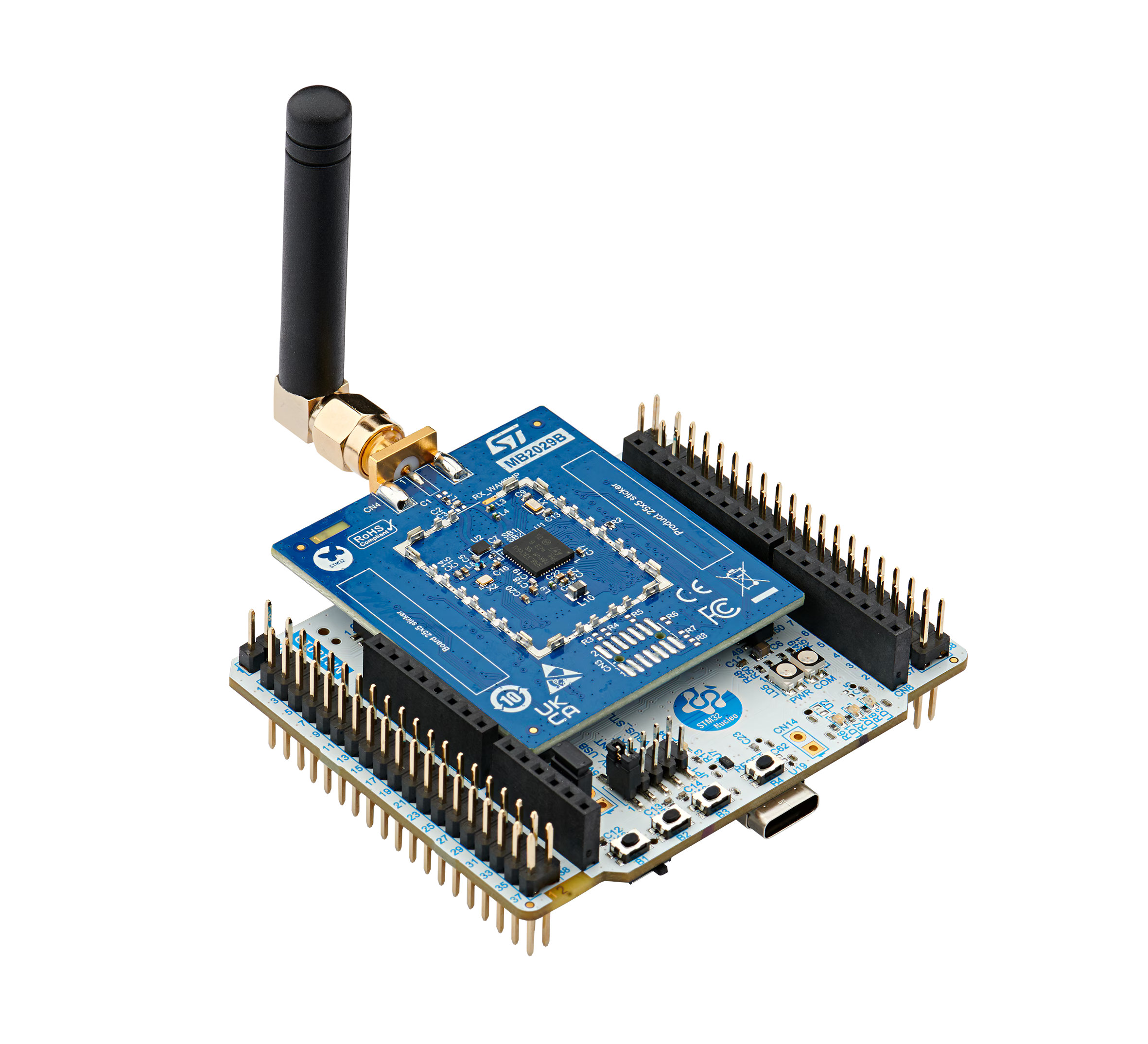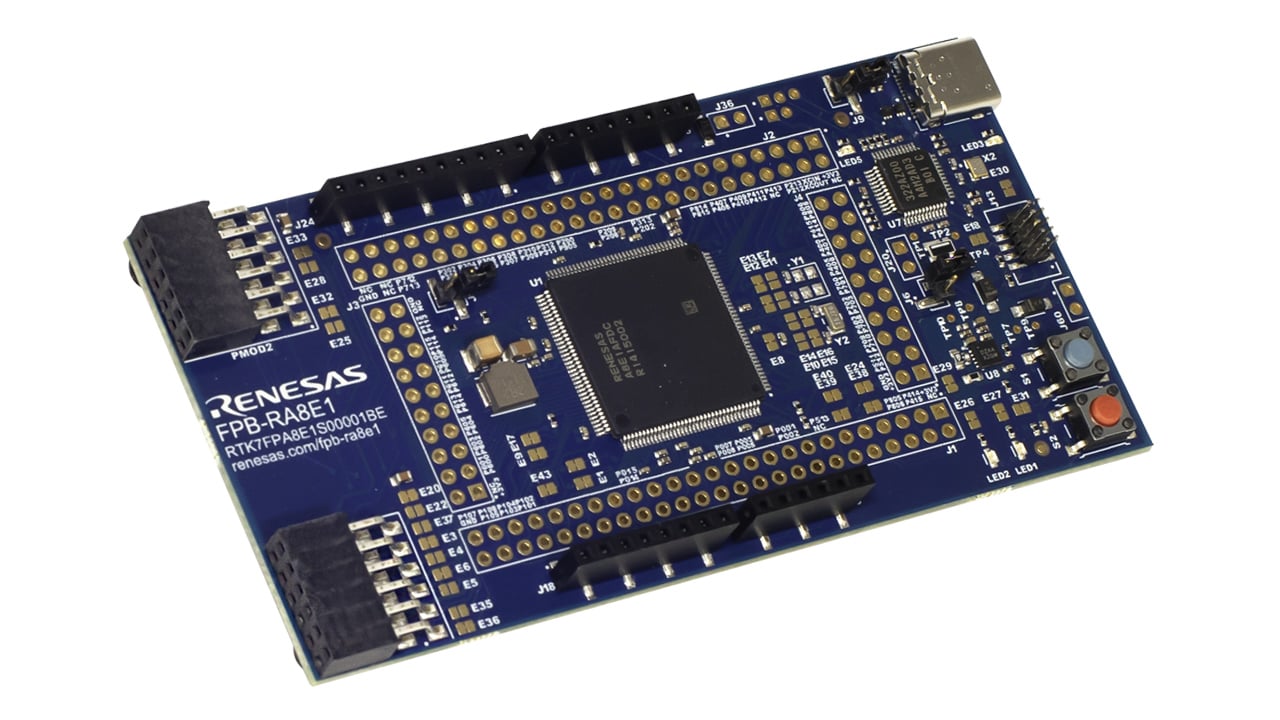STMicro has announced the availability of the STM32N6 microcontroller series based on the 800MHz ARM Cortex-M55 and the 600 GOPS-capable Neural-ART Accelerator. The STM32N6 is the company’s “newest and most powerful STM32 series,” bringing MPU-level performance to MCUs. It is the first STM32 to feature the Arm Cortex-M55 and offer up to 4.2MB of embedded RAM. Additionally, the chip includes ST’s NeoChrom GPU and an H.264 hardware encoder. According to Remi El-Quazzane, MDRF (Microcontrollers, Digital ICs, and RF Products) President at STMicro, the STM32N6 “marks the beginning of a long journey of AI hardware-accelerated STM32, which will enable innovations in applications and products in ways not possible with any other embedded processing solution.” STMicro offers two versions of the STM32N6 MCU: the STM32N6x7 AI line featuring the Neural-ART accelerator and the STM32N6x5 GP (general-purpose) product line without an NPU. The microcontroller series is primarily targeted at computer vision and audio […]
SenseCAP Indicator – An ESP32-S3 and RP2040-based Meshtastic LoRa device with a 4-inch touchscreen display
The SenseCAP Indicator is a 4-inch capacitive touchscreen device designed for IoT connectivity and Meshtastic applications powered by Espressif Systems ESP32-S3 and Raspberry Pi RP2040 microcontrollers. It supports Wi-Fi (802.11b/g/n) and Bluetooth 5.0 LE connectivity, as well as LoRa using the Semtech SX1262 chip. The device also provides Grove connectors for expansion and a microSD slot supporting up to 32GB. Preloaded with Meshtastic firmware, the SenseCap Indicator is ready to function as a Meshtastic desktop or car node and can be reconfigured into a LoRaWAN Single-Channel Gateway. It features a 3.95-inch RGB touchscreen with 480×480 resolution, which is larger than most other Meshtastic solutions we’ve covered. Previously, we reviewed the SenseCAP Indicator D1Pro, which shares many features with the SenseCAP Indicator. However, the D1Pro integrates tVOC and CO2 sensors, along with an external Grove AHT20 TH sensor for precise temperature and humidity measurements. With real-time air quality monitoring from the […]
SECO launches Mediatek Genio 510 and 700 SMARC SoMs built for industrial and edge AI applications
SECO SOM-SMARC-Genio500 and SOM-SMARC-Genio700 are two new SMARC system-on-modules products powered by MediaTek Genio 510 and 700 Cortex-A78/A55 series SoCs. These industrial modules are designed for high power efficiency and offer reduced energy consumption even during intensive edge AI workloads, and are suitable for retail touchscreens, intelligent industrial sensors, advanced conferencing systems, and dynamic digital signage. Both modules feature up to 8GB LPDDR4 memory, 64GB eMMC flash, two Ethernet interfaces via RGMII and USB, an optional M.2 slot for a Wi-Fi/Bluetooth module, and camera inputs. We’ve previously considered Via’s offerings with the same MediaTek Genio 700 application processor: a SMARC module, a single-board computer, and a fully embedded system. The IBase ISR500 is another option featuring the Mediatek Genio 510 or Genio 700. SECO SOM-SMARC-Genio700 & SOM-SMARC-Genio510 specifications: SoC (one or the other) SOM-SMARC-Genio700 – MediaTek Genio 700 (MT8390) CPU – Octa-core processor with 2x Cortex-A78 cores @ up to […]
Murata LBWA0ZZ2HK/HL low-power Wi-Fi HaLow modules can communicate over 2km
Murata has recently introduced two new ultra-low power, sub-1 GHz Wi-Fi HaLow modules (LBWA0ZZ2HK and LBWA0ZZ2HL) compliant with Sub-1 GHz (S1G) 802.11ah Wi-Fi standard across key regions. The Type 2HK module operates at frequencies from 902MHz to 928MHz and features a communication range of 2km, whereas the low-power Type 2HL operates at 750MHz to 950MHz and can communicate over 1km. According to Murata, these modules can achieve high-speed communication over 1km and are suitable for applications such as smart devices, smart homes, smart accessories, and others. The modules are based on the NEWRACOM NRC7394 chipset built around an Arm Cortex-M3 with enough processing power for handling the Wi-Fi subsystem and user applications. Both modules feature an SPI host interface with peripherals including SPI, 2x UART, 2x I2C, 2-channel 10-bit ADC, and GPIO. Murata LBWA0ZZ2HK and LBWA0ZZ2HL specifications: HaLow SoC – Newracom NRC7394 SoC Frequency 2HL – Sub-1 GHz (750-950 MHz) […]
Silicon Labs SiWG917Y and SiWN917Y are ultra-low power WiFi 6 and Bluetooth LE 5.4 IoT modules
Silicon Labs SiWG917Y and SiWN917Y are pre-certified, ultra-low power 2.4 GHz WiFi 6 and Bluetooth Low Energy (LE) 5.4 modules made as an extension of the Wireless Gecko Series 2 Arm Cortex-M33 microcontroller family and designed for IoT applications such as Smart Home devices, building automation solutions, healthcare devices, industrial sensors, and asset trackers. The SiWG917Y module is used as a standalone solution where all application code runs on an Arm Cortex-M4 core, and the SiWN917Y module is designed as a Network Co-processor so customers can execute their application on a separate MCU while the wireless module manages WiFi 6 and BLE 5.4. Silicon Labs SiWx917Y modules specifications: Microcontroller MCU Arm Cortex-M4F application core up to 180 MHz (225 DMIPS performance) Arm Cortex-M4 network wireless processor running up to 160 MHz, Accelerators – Integrated FPU, MPU, NVIC, Matrix vector processor (MVP) Memory 672 KB embedded SRAM shared by Cortex-M4 and […]
Matter 1.4 specification improves multi-admin and energy management, adds new devices like solar panels, batteries, and water heaters
We covered the Matter 1.3 specification in May 2024, but the Connectivity Standards Alliance is wasting no time and the Matter 1.4 specification is already out with features and improvements such as “Enhanced Multi-Admin”, Matter certifiable Home Routers and Access Points, energy management enhancements, and several new device types such as solar power equipment and batteries. Matter has been deployed in millions of Smart Home products in just a few years and aims to enable interoperability between devices from multiple vendors. Paisit reviewed a few Matter products from SONOFF including the MINIR4M Smart Switch, SONOFF Zigbee Bridge Ultra, and SwitchMan M5 Matter wall switch, and while Matter interoperability is working since devices can be controlled from Matter-compatible apps (e.g. Apple Home), users do lose some features found in the “native” app such as eWelink in the case of SONOFF devices. Matter 1.4 key improvements and new features: Home Routers and […]
STMicro NUCLEO-WL33CC1 and NUCLEO-WL33CC2 boards features STM32WL33 Cortex-M0+ Sub-GHz wireless MCU
STMicro unveiled the STM32WL3 sub-GHz wireless MCU family last year and has now announced the general availability of the STM32WL33 Arm Cortex-M0+ microcontroller, along with two development boards namely the NUCLEO-WL33CC1 and NUCLEO-WL33CC2 for battery-powered smart meters and smart building and industrial monitoring solutions using wireless M-Bus, Sigfox, WiSun, LoWPAN or Mioty LPWAN protocols among others. The NUCLEO-WL33CC1 and NUCLEO-WL33CC2 development boards look the same, but the former supports 826-958 MHz high-band frequencies, while the latter handles 413-479 MHz low-band frequencies. STMicro NUCLEO-WL33CC1/2 specifications: SoC – STMicro STM32WL33CCV6 MCU Core – Arm Cortex-M0+ up to 64 MHz Memory – 32KB SRAM with full retention Storage 256KB flash 1 KB OTP flash (user data) Sub-GHz Wireless 413-479 MHz or 826-958 MHz frequency bands with OOK, ASK, 2(G)FSK, 4(G)FSK, D‑BPSK, and DSSS modulations Compatible with proprietary and standardized wireless protocols such as WM-Bus, Sigfox, Mioty, KNX-RF, and IEEE 802.15.4g Low-power autonomous wake-up […]
Renesas RA8E1 and RA8E2 entry-level Arm Cortex-M85 MCUs target cost-sensitive applications
Renesas has expanded its Arm Cortex-M85-based RA8 series to include two new entry-level MCUs, RA8E1 and RA8E2. The new microcontrollers perform similarly to other Arm Cortex-M85-based microcontrollers and are offered at a lower price point thanks to a streamlined feature set to reduce costs. The RA8E1 and RA8E2 groups of microcontrollers will be useful for high-volume applications in industrial and home automation, healthcare, office equipment, and consumer products. We have previously covered other models in Renesas’ RA8 series, including the Renesas RA8T1, RA8D1, and the very first Cortex-M85 microcontroller, the Renesas RA8M1. The RA8 series consists of microcontrollers based on the Arm Cortex-M85 core with a performance of 6.39 CoreMark/MHz and Arm’s M-Profile Vector Extension which provides a 4x performance boost for DSP and ML workloads while maintaining low power consumption. The RA8E1 and RA8E2 Cortex-M85 microcontroller groups differ mostly in clock speed, available internal and external memory, communication interfaces, […]


